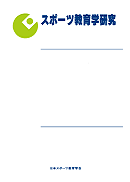Volume 40, Issue 1
Displaying 1-8 of 8 articles from this issue
- |<
- <
- 1
- >
- >|
-
2020 Volume 40 Issue 1 Pages 1-17
Published: June 30, 2020
Released on J-STAGE: September 30, 2020
Download PDF (987K) -
2020 Volume 40 Issue 1 Pages 19-30
Published: June 30, 2020
Released on J-STAGE: September 30, 2020
Download PDF (460K) -
2020 Volume 40 Issue 1 Pages 31-50
Published: June 30, 2020
Released on J-STAGE: September 30, 2020
Download PDF (672K) -
2020 Volume 40 Issue 1 Pages 51-60
Published: June 30, 2020
Released on J-STAGE: September 30, 2020
Download PDF (478K)
-
2020 Volume 40 Issue 1 Pages 61-77
Published: June 30, 2020
Released on J-STAGE: September 30, 2020
Download PDF (642K)
-
2020 Volume 40 Issue 1 Pages 79-82
Published: June 30, 2020
Released on J-STAGE: September 30, 2020
Download PDF (311K) -
2020 Volume 40 Issue 1 Pages 83-88
Published: June 30, 2020
Released on J-STAGE: September 30, 2020
Download PDF (591K) -
2020 Volume 40 Issue 1 Pages 89-91
Published: June 30, 2020
Released on J-STAGE: September 30, 2020
Download PDF (228K)
- |<
- <
- 1
- >
- >|
